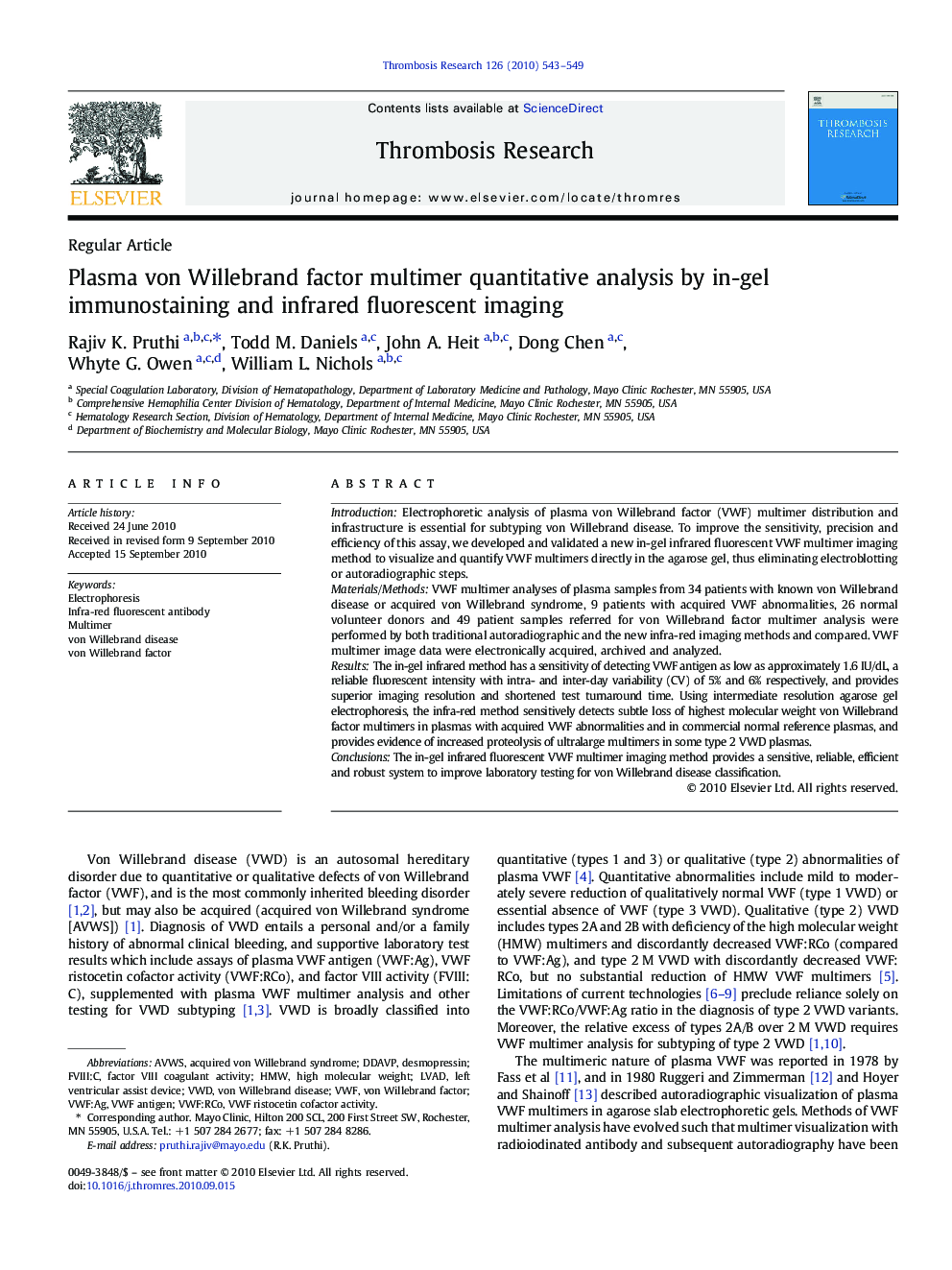| Article ID | Journal | Published Year | Pages | File Type |
|---|---|---|---|---|
| 3029126 | Thrombosis Research | 2010 | 7 Pages |
IntroductionElectrophoretic analysis of plasma von Willebrand factor (VWF) multimer distribution and infrastructure is essential for subtyping von Willebrand disease. To improve the sensitivity, precision and efficiency of this assay, we developed and validated a new in-gel infrared fluorescent VWF multimer imaging method to visualize and quantify VWF multimers directly in the agarose gel, thus eliminating electroblotting or autoradiographic steps.Materials/MethodsVWF multimer analyses of plasma samples from 34 patients with known von Willebrand disease or acquired von Willebrand syndrome, 9 patients with acquired VWF abnormalities, 26 normal volunteer donors and 49 patient samples referred for von Willebrand factor multimer analysis were performed by both traditional autoradiographic and the new infra-red imaging methods and compared. VWF multimer image data were electronically acquired, archived and analyzed.ResultsThe in-gel infrared method has a sensitivity of detecting VWF antigen as low as approximately 1.6 IU/dL, a reliable fluorescent intensity with intra- and inter-day variability (CV) of 5% and 6% respectively, and provides superior imaging resolution and shortened test turnaround time. Using intermediate resolution agarose gel electrophoresis, the infra-red method sensitively detects subtle loss of highest molecular weight von Willebrand factor multimers in plasmas with acquired VWF abnormalities and in commercial normal reference plasmas, and provides evidence of increased proteolysis of ultralarge multimers in some type 2 VWD plasmas.ConclusionsThe in-gel infrared fluorescent VWF multimer imaging method provides a sensitive, reliable, efficient and robust system to improve laboratory testing for von Willebrand disease classification.
